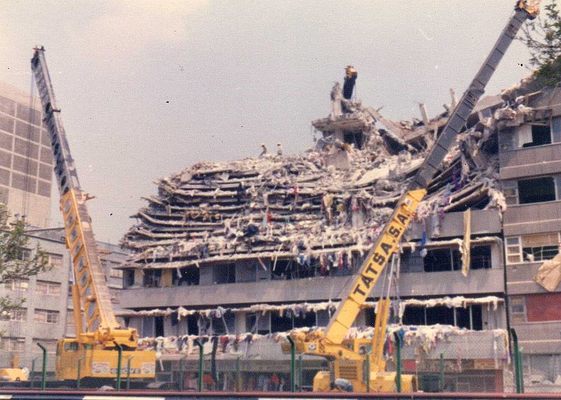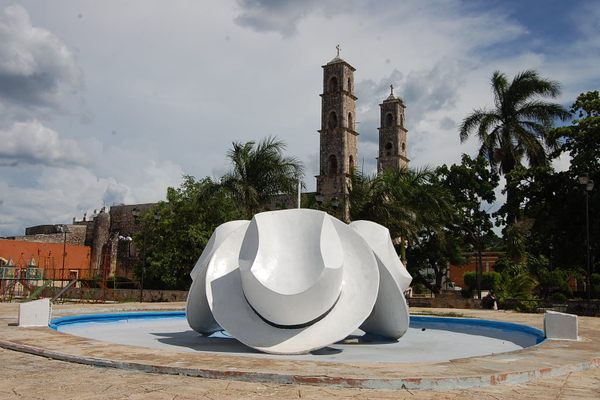About
Mexico City's Colonia Obrera carries its reputation right in its name. This colonia (neighborhood) is named after the obreros, a catch-all word that is somewhat concurrent with the "blue-collar worker" in English. Mexican obrero groups most commonly include those involved in professions such as construction work and manufacturing. One of the main manufacturing sectors in the country is that of textiles.
For decades, Colonia Obrera has been home to several textile workshops and factories, known as maquiladoras, that are mostly staffed by women. It is estimated that in 1985, up to 40,000 women worked as seamstresses in the Colonia Obrera. Early in the morning of the 19th of September of that year, a magnitude 8.1 earthquake off the Pacific coast would lead to the collapse of several buildings in Mexico City.
Textile industrial installations in this Colonia were particularly affected, as modern estimates state that up to 800 buildings collapsed due to a combination of lax building codes and the heavy machinery and materials within. In addition, several supervisors and managers of the factories and workshops actively blocked the seamstresses from evacuating during the earthquake. In total, it is believed up to 1,600 female textile workers perished due to the disaster.
The monument by sculptor Patricia Mejía stands on a courtyard built on the grounds where one of these workshops collapsed and was inaugurated in 2003. It depicts a seamstress sitting in front of a sewing machine, working on a Mexican flag. In 2017, coincidentally on September 19, another earthquake shook Mexico City.
The 32-year period highlighted the changes that had and hadn't occurred in Mexico since the last earthquake. Changes in building codes meant that far fewer buildings collapsed, regular drills meant people were more prepared and informed, and the official total death toll of 370 paled in comparison to the tens of thousands of deaths in 1985. Textile installations of the Colonia Obrera would again be counted among the collapses, however.
The 2017 earthquake would again see seamstresses affected due to poor working conditions and management unconcerned with their well-being. The effects of globalization were also clearly on display, as some of the foreign casualties of the disaster included four Taiwanese workers from a collapsed textile workshop, half of the total foreign deaths from the earthquake.
Related Tags
Yucatan: Astronomy, Pyramids & Mayan Legends
Mayan legends, ancient craters, lost cities, and stunning constellations.
Book NowPublished
August 27, 2021
Sources
- https://lopezdoriga.com/nacional/mas-de-mil-costureras-murieron-atrapadas-en-el-terremoto-del-85/
- https://planeteando.org/2020/10/20/monumento-a-la-costurera-el-vestigio-de-una-catastrofe-que-develo-una-serie-de-injusticias/
- https://cimacnoticias.com.mx/noticia/inauguran-estatua-en-honor-a-costureras-caidas-en-1985/
- https://www.excelsior.com.mx/comunidad/2017/10/03/1192320
- https://lopezdoriga.com/nacional/mas-de-mil-costureras-murieron-atrapadas-en-el-terremoto-del-85/































